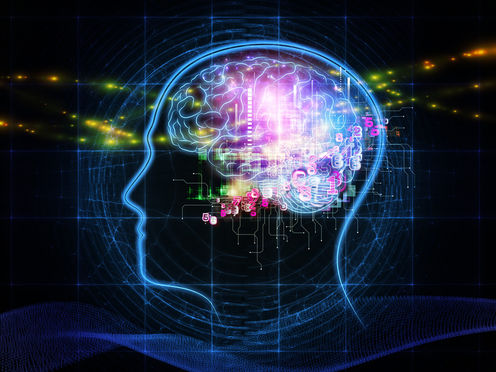
Our brains make judgments about images before we're even aware of making a decision. A Health Blog/Flickr, CC BY-NC
By Daniel Bennett, University of Melbourne
What makes us decide? At one level, this seems like an easy question: we think our options through, pick the one we like best and act on it.
If we dig a little deeper, though, the question becomes more difficult to answer. How do we settle on what our options are? What makes us prefer one option to another?
These decisions may be partially unconscious, according to mounting evidence. This is because, from moment to moment, our brains are set to run on autopilot. Most of the information that our senses pick up is processed automatically; just a fraction of that information ever makes it into our conscious awareness.
This makes our brains efficient, since it means we don’t have to pay conscious attention to everything at once. But it has the side effect that we can make decisions based on information of which we are not fully aware.
Fully automatic advertising
Advertising provides a good example of this effect. Even if you are not paying attention to the fast-food billboard beside you at the bus stop, your brain may still be processing it outside your conscious awareness.

Advertisements might seem like part of the background but our subconscious is always taking notice. The Ximending District in Taipei, Taiwan/Shutterstock
Later on, when you decide to buy take-away food instead of cooking dinner, you might have no idea that the billboard you saw half-an-hour ago prompted your decision.
In a recent study at the University of Melbourne, we investigated this phenomenon. Specifically, we looked at what kind of information our brains automatically extract from the world around us.
To do this, we showed participants a series of pictures in the background of their vision while they performed an unrelated task in the foreground. The pictures were pleasant images of everyday things, such as food and social scenes, or status symbols like money and cars. Meanwhile, we recorded the electrical activity of participants’ brains using electro-encephalography (EEG).
After participants finished the task we showed the pictures again. This time we asked several questions about them. Specifically, we asked participants to think about the images and tell us: (a) how exciting they thought the images were; and (b) whether the images made them think more of the present or of the future.
We then applied a statistical “decoding” technique to the EEG brain activity recorded when people first saw the images, and found that we could predict judgments of both excitement and time reference from brain activity.
Importantly, participants didn’t know that they would have to make these judgements when they first saw the pictures. This implies that the information about excitement and time reference must have been automatically extracted by the brain.
A little faster than thought
What this tells us is that participants’ brains were performing a fast semantic analysis of the images, even though the images weren’t relevant to the task at hand. What’s more, participants’ brains were extracting highly abstract information, like whether an image related more to the present or to the future.

Making judgments about the past and future is high-level thinking, but we can do it unconsciously. Sara/Flickr, CC BY-NC
Taken in context, our results suggest that common-sense ideas about how we make decisions underestimate the importance of processing outside conscious awareness.
Curate your environment
Our laboratory has previously shown that people become more impulsive in simple financial decisions when they are first shown a rewarding “prime”, such as the Apple logo.
This is true even when the prime appears for only a very short time and is not recognizable. That goes to show the surprising power of processing outside conscious awareness.
Our brain’s automatic processing of the world around us can tilt the playing field, even when we feel we are in full control of our actions. By showing that our brains automatically make abstract judgments about images, our research suggests a possible mechanism by which this decision priming could work.
Even very complex decisions might be more influenced by this mechanism than we realize. We have been speaking so far of “simple” decisions, but in principle even decisions with important ramifications, like buying a house or changing jobs, could be affected.
This perspective might seem disconcerting, since it seems to rob us of our sense of control over our decisions. However, this isn’t entirely true. We may not control what kind of information our brain processes from our environment, but we can control what kinds of environments we put ourselves in.
This explains, for instance, why it’s a bad idea for somebody trying to quit smoking to surround themselves with people who smoke, and why someone with a gambling problem would be better off not watching TV poker.
Likewise, the more impulsive and risk-seeking you are, the more important it may be to surround yourself with people and environments that prompt you to think of the future. Our brains may be automatic processing engines, but we can control what kind of fuel those engines receive.![]()
Daniel Bennett, PhD Candidate at University of Melbourne, does not work for, consult to, own shares in or receive funding from any company or organization that would benefit from this article, and has no relevant affiliations.
This article was originally published on The Conversation. Read the original article.




Comments